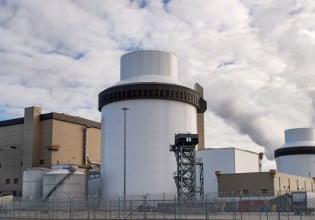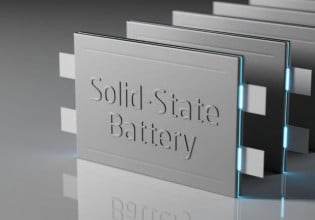Iron Phosphate: A Key Material of the Lithium-Ion Battery Future
LFP batteries will play a significant role in EVs and energy storage—if bottlenecks in phosphate refining can be solved.
Lithium-ion batteries power various devices, from smartphones and laptops to electric vehicles (EVs) and battery energy storage systems. One key component of lithium-ion batteries is the cathode material. Because high-energy density is needed, cathodes made from oxides of nickel, cobalt, and either manganese or aluminum have been popular, particularly for the long-range between charges that they can offer EVs. More recently, however, cathodes made with iron phosphate (LFP) have grown in popularity, increasing demand for phosphate production and refining.
Phosphate mine. Image used courtesy of USDA Forest Service
LFP for Batteries
Iron phosphate is a black, water-insoluble chemical compound with the formula LiFePO4. Compared with lithium-ion batteries, LFP batteries have several advantages. They are less expensive to produce, have a longer cycle life, and are more thermally stable. One drawback of LFP batteries is they do not have the same energy and power densities as those made with nickel-based cathodes. This means EV batteries made with LFP cathodes have less range and lower performance but may still be more than acceptable for lower-price and mid-range EVs.
Prime applications for LFP also include energy storage systems and backup power supplies where their low cost offsets lower energy density concerns.
Challenges in Iron Phosphate Production
Iron phosphate is a relatively inexpensive and environmentally friendly material. The biggest mining producers of phosphate ore are China, the U.S., and Morocco. Huge new sources have also been discovered in Norway.
Iron phosphate is used industrially as a catalyst in the steel and glass industries and agricultural fertilizer production. It is abundant, with global reserves of phosphate rock estimated to be sufficient for over 100 years, before its sudden popularity in LFP traction batteries for EVs.
The increased use of LFP batteries in electric vehicles and energy storage will require significantly more purified phosphoric acid (PPA). The automotive sector currently represents about 5 percent of purified phosphoric acid (PPA) demand, expected to jump to 24 percent by 2030. This growing demand will need new sources of supply, according to the recently released Phosphoric Acid Market Outlook from Benchmark Mineral Intelligence.
Demand for phosphoric acid production has increased in recent years. Image used courtesy of Benchmark Mineral Intelligence
Although the supply of mined phosphate materials appears adequate to meet future needs, refining the material into PPA does not meet demand. China currently dominates the phosphate refining industry, with almost two-thirds of the capacity. There are now only three PPA refining projects underway outside of China. Large-scale refining facilities that can produce 30,000 tons of PPA require a capital investment of $100 million, and meeting the demand as LFP battery production grows will require many such refining facilities to be built before 2030.
Refining phosphate rocks into PPA must be done to an extremely high level for use in LFP battery cathodes. Unless heavy metals and impurities are removed, the lithium ions can have a difficult time moving from the positive (cathode) and negative (anode) electrodes. Only about 3 percent of the total supply of phosphate minerals is currently usable for refinement to cathode battery materials.
It is also beneficial to do PPA refining near the battery plant that will use the material to produce LFP cells. Transporting phosphate-bearing rocks is expensive, and refining the product near the battery plant cuts down on costs. Chinese companies like BYD and CATL specialize in LFP cells and have a huge advantage with the dominance of China in PPA refining.
LFP Outlook
Beyond the current LFP chemistry, adding manganese to the lithium iron phosphate cathode has improved battery energy density to nearly that of nickel-based cathodes, resulting in an increased range of an EV on a single charge. For these battery chemistries to continue to grow, PPA refining capacity will require significant investment, particularly outside of China, if LFP traction batteries are to be produced in Western gigafactories.








